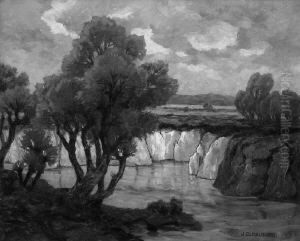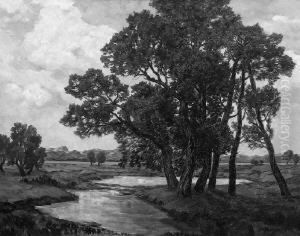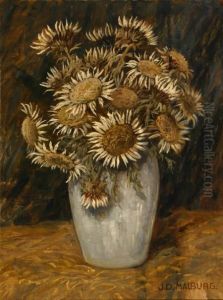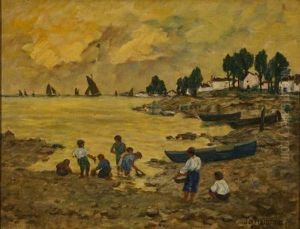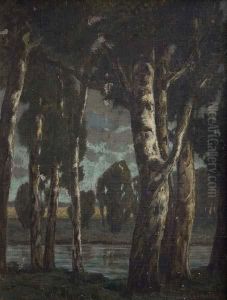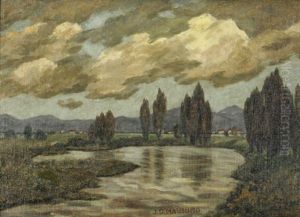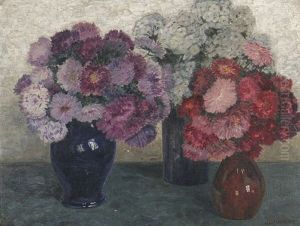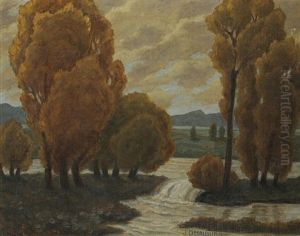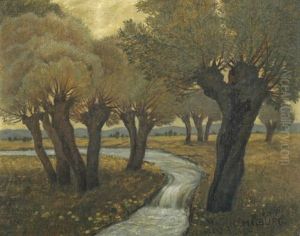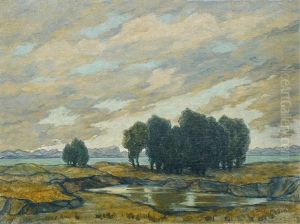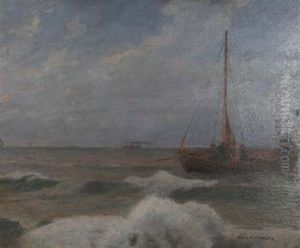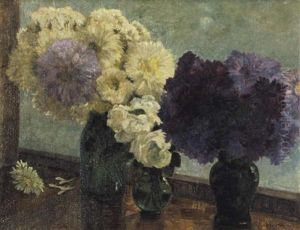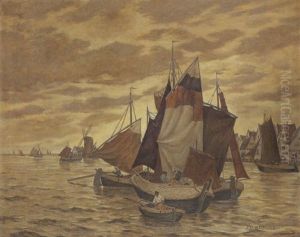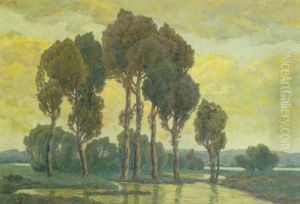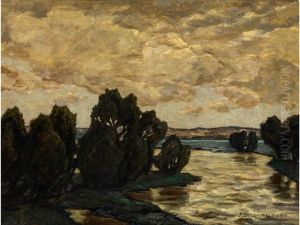Johanna Dill-Malburg Paintings
Johanna Dill-Malburg was a German painter and graphic artist whose career spanned the first half of the 20th century, a period marked by significant upheaval and transformation in the world of art. Born in 1884 in Trier, Germany, she grew up in an era when women were beginning to assert their presence in the professional art world, albeit facing considerable challenges. Dill-Malburg's work is characterized by its versatility, encompassing a range of styles and subjects, from traditional landscapes and portraits to more experimental and abstract compositions.
Initially trained in the academic tradition, she later embraced the influences of Impressionism and Expressionism, reflecting the broader shifts in European art of the time. Her early work shows a keen attention to detail and a deep appreciation for the natural world, while her later pieces become more focused on emotional expression and the use of color and form to convey mood and sentiment. Despite the quality of her work, like many women artists of her time, Johanna Dill-Malburg did not receive the same level of recognition as her male counterparts.
Throughout her career, Dill-Malburg participated in various art exhibitions and was involved in several art communities, contributing to the vibrant cultural life of Germany between the wars. However, the rise of the Nazi regime and the outbreak of World War II profoundly affected the artistic landscape in Germany, leading to restrictions on artistic expression and the persecution of many artists. Dill-Malburg's work from this period reflects a sense of isolation and a retreat into more personal and introspective themes.
After the war, she continued to produce art, though her work from this period has been less studied and remains less well-known. Johanna Dill-Malburg passed away in 1978, leaving behind a diverse body of work that offers valuable insights into the experiences and challenges of female artists in the 20th century. Despite the lack of widespread recognition during her lifetime, her contributions to German art have been increasingly appreciated in recent years, with her paintings and graphics featured in various exhibitions and collections that aim to highlight the underrepresented voices of women in art history.
